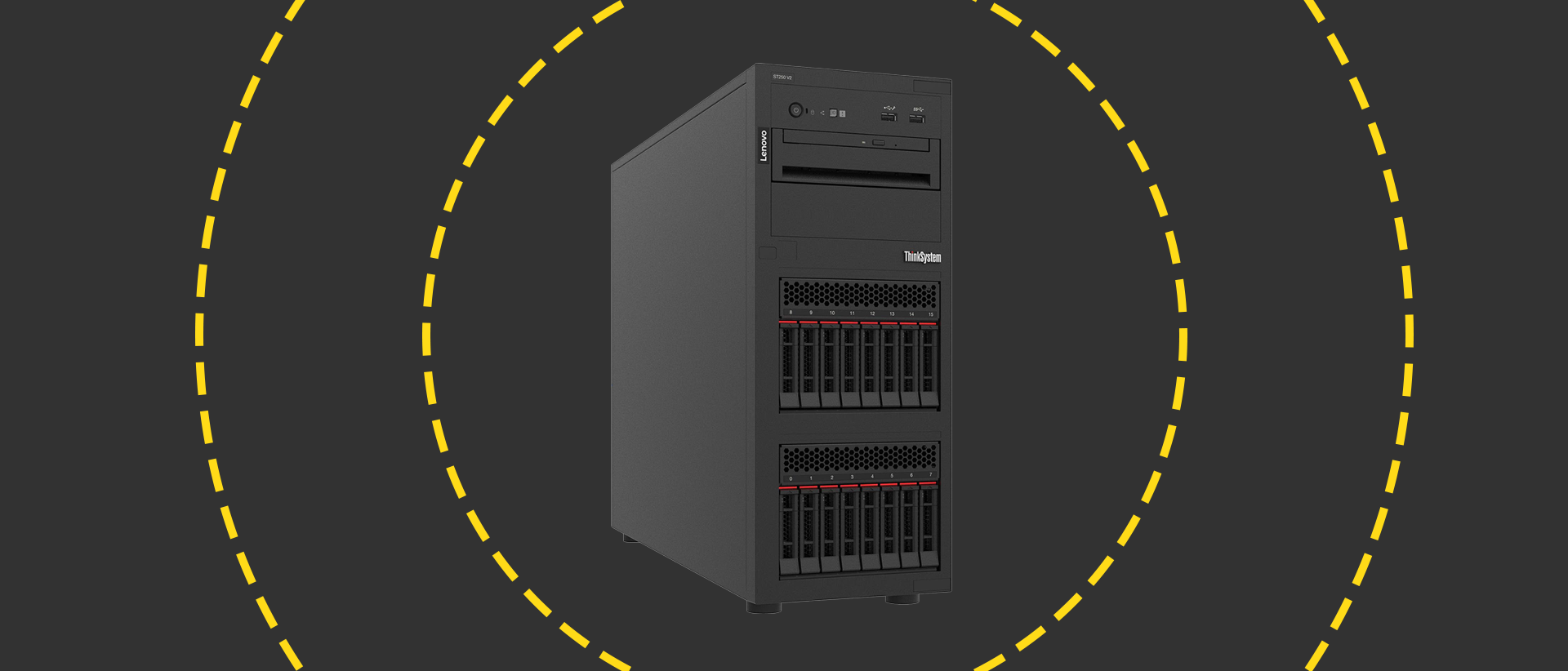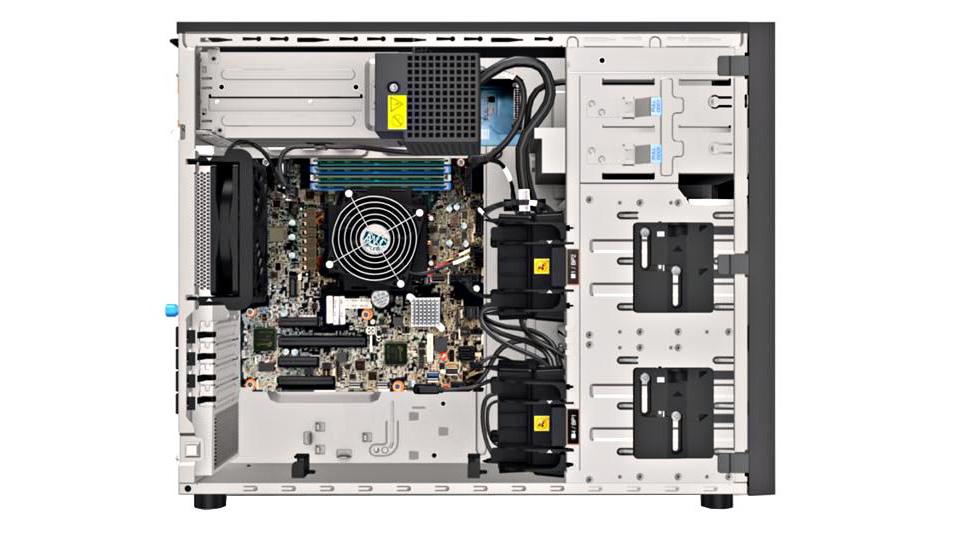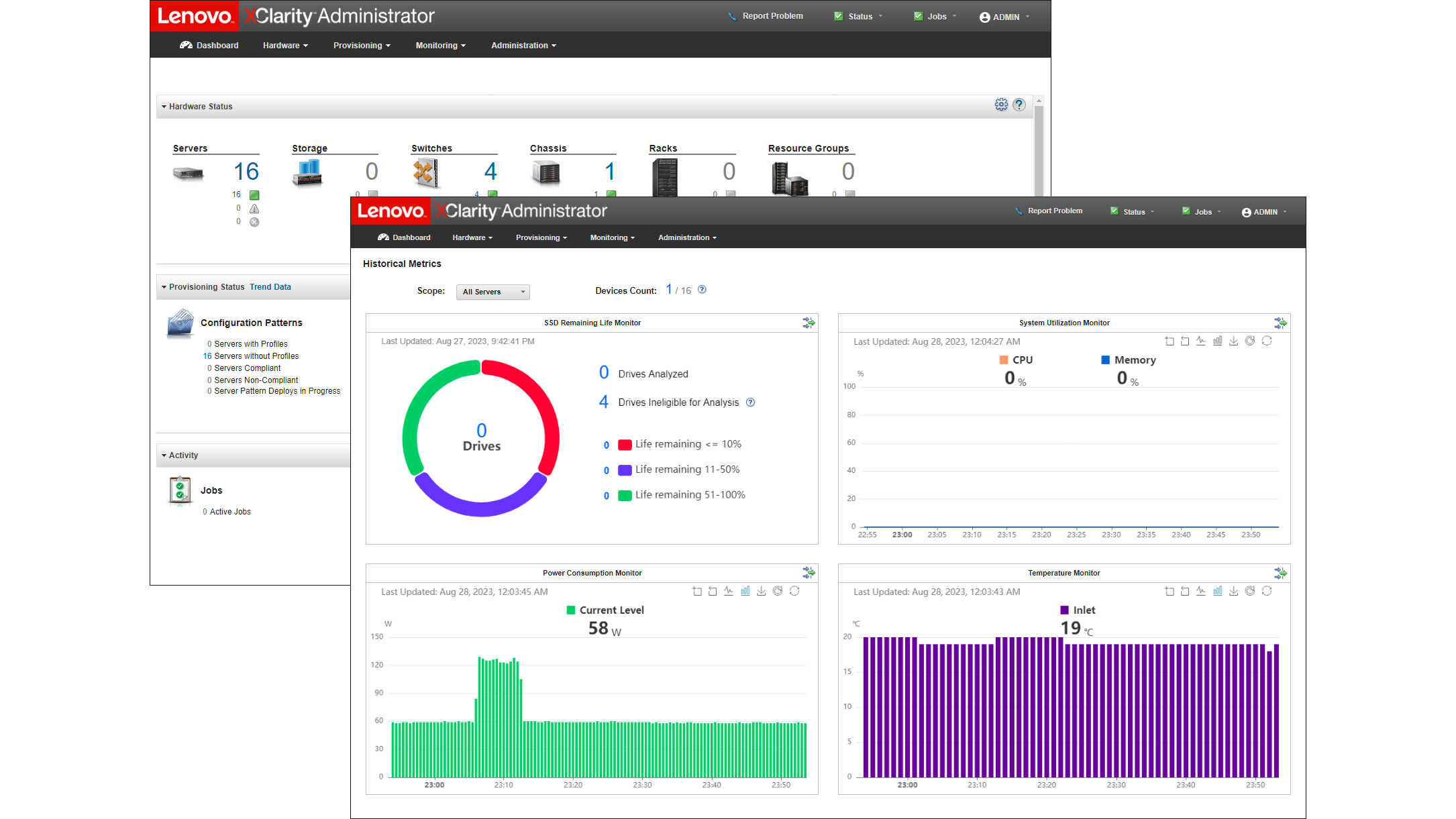Lenovo ThinkSystem ST250 V2 review: A big entry-level server at a small price
A powerful and expandable tower server that's an affordable option for SMBs

-
+
Great value
-
+
Xeon E-2300 CPU support
-
+
Good expansion potential
-
+
High storage capacity
-
+
XCC remote management
-
-
On-board SATA controller has some limitations

SMBs and remote offices looking for an entry-level tower server with a good combination of power, capacity, and value will find Lenovo's ThinkSystem ST250 V2 a worthy candidate. Stepping up as a replacement to the venerable ST250 model, it adds plenty of new features including support for all ten members of Intel's Xeon E-2300 CPU family, a doubling in maximum memory capacity to 128GB, uprated PCIe Gen 4 expansion slots and more flexible storage options.

The ST250 V2 includes Lenovo's embedded XClarity controller for enterprise-class remote monitoring and management but goes further than its predecessor with the Platform Firmware Resiliency (PFR) hardware root of trust. Not normally seen in entry-level servers, this is a silicon-based security feature that's designed to monitor the server's firmware for authenticity, recover corrupted images to a known good state, and block malicious attempts to overwrite it.
Price-wise, the ST250 V2 looks very affordable with the 7D8FA01LEA model costing a shade under £1,300 and including a speedy 6-core 3.2GHz Xeon E-2356G CPU, a 32GB stick of TruDDR4 memory, an unpopulated 8-bay SATA SFF drive cage, a single 750W hot-plug PSU and an XClarity Enterprise license upgrade. Lenovo offers plenty of other CPU choices including cheaper dual-core Pentium G-Series chips although we can't see any real benefits in these as the Xeon E-2300 options don't cost a lot more and are significantly more powerful.
Lenovo ThinkSystem ST250 V2 review: Design and expansion
The tower chassis is very solidly built and its steel side panel can be padlocked shut or secured with a Kensington lock. In base systems the front-mounted devices and drive bays are unprotected but Lenovo offers an optional lockable front security door and chassis intrusion switch.
You can also flip the server on its side where it becomes a 4U rack mount model. Note that along with slide rails and a cable management arm, the rack mount kit includes a tray to hold the server in place which adds an extra 1U to its height.

Cooling is handled well with the CPU fitted with an active heatsink, dedicated fans provided for each drive cage, and a large 12cms diameter fan located on the rear panel. They're clearly capable of shifting a lot of air but noise levels are commendably low making the ST250 V2 a great choice for smaller offices that value tranquillity.
Networking gets off to a good start as the server comes with dual embedded Gigabit network ports and there's plenty of room to add more with Lenovo offering a choice of dual and quad-port Gigabit and 10GbE adapters plus dual-port 10/25GbE SFP28 options. The server has four available PCIe slots with the x16 slot uprated to the Gen 4 variety when a Xeon CPU is in residence.
Lenovo ThinkSystem ST250 V2 review: Storage features
The ST250 V2 offers an impressive range of storage features with base models starting with 4-bay LFF or 8-bay SFF hot-swap drive cages. There's room above for a second cage and you can have a hybrid mix of LFF and SFF cages if you wish.
The embedded C256 chipset and integral Intel VROC (Virtual RAID on CPU) controller supports up to eight SATA drives and offers software-managed RAID0, 1, 10, and 5 arrays. Bear in mind that the VROC controller only supports 'simple-swap', or cold-swap, SATA drive bays but you can choose from a wide range of Lenovo RAID cards that bring hot-swap into play along with support for SAS3 devices and RAID6/60 arrays.
A limitation of the on-board SATA controller is if you install an optical drive in one of the upper 5.25in. peripheral bays, it automatically reserves two SATA ports thus reducing HDD and SSD support to six devices. We aren't convinced many SMBs will need it but as long as you have a Xeon CPU (a Pentium CPU doesn't have enough lanes), you can also add one high-performance NVMe SSD which is cabled directly to the motherboard's MCIO connector.
The single M.2 SSD slot on the older ST250 motherboard has gone as Lenovo now offers an optional dual-slot M.2 adapter card. Similar to Dell's BOSS cards, it provides a RAID-protected repository for running an OS or hypervisor from but only supports cold-swap SATA SSDs and occupies a PCIe slot.
Lenovo ThinkSystem ST250 V2 review: XClarity management
It may only be an entry-level tower but the ST250 V2 is endowed with the same full-fat XClarity Controller (XCC) chip and dedicated Gigabit port you'll find on Lenovo's larger ThinkSystem servers. The XCC Standard version provides features such as remote power controls, sensor monitoring, and inventory while the Enterprise upgrade adds remote KVM, virtual media services, remote OS deployment, and power-capping.

The XCC's web console presents plenty of information about critical hardware components plus device utilization and provides hardware inventory and firmware upgrade tools. OS deployment is a piece of cake as we used the built-in provisioning manager to create a mirrored dual-drive SSD array and left the Effortless Install option to load Windows Server 2022 from a mapped ISO file in 30 minutes with no further intervention required from us.
Centralized remote management is provided by Lenovo's XClarity Administrator which we run in the lab as a Hyper-V VM. After adding the ST250 V2 to its console, we could remotely monitor it, employ the image library for firmware updates plus OS deployments and access the Administrator host from the XClarity iOS app, and monitor the server from a mobile.
Lenovo ThinkSystem ST250 V2 review: Is it worth it
The ThinkSystem ST250 V2 is a fine choice as a first server for SMBs as this well-built tower offers a good hardware package for the price and has plenty of room to expand with demand. It stacks up well against the competition at this price point, delivers an impressively high storage capacity, and includes Lenovo's embedded XCC controller for full remote management and monitoring.
Lenovo ThinkSystem ST250 V2 specifications
| Chassis | Tower/5U rack |
| CPU | 6-core 2.9GHz Intel Xeon E-2336 |
| Memory | 128GB 3,200 TruDDR4 ECC UDIMM (max 128GB) |
| Storage bays | 4 x LFF hot-swap (max 8 LFF/16 SFF with two cages) |
| RAID | Intel VROC software RAID0, 1, 10, 5 |
| Storage included | 4 x 960GB SATA SFF SSDs |
| Other Storage | Optional dual slot M.2 SATA SSD PCIe boot adapter |
| Network | 2 x Gigabit |
| Expansion | 1 x PCIe Gen 4, 3 x PCIe Gen 3 slots |
| Power | 1 x 550W Platinum hot-plug PSU (max 2) |
| Management | Lenovo XClarity XCC Enterprise with Gigabit |
| Warranty | 3Yrs On-Site NBD |
Get the ITPro daily newsletter
Sign up today and you will receive a free copy of our Future Focus 2025 report - the leading guidance on AI, cybersecurity and other IT challenges as per 700+ senior executives
Dave is an IT consultant and freelance journalist specialising in hands-on reviews of computer networking products covering all market sectors from small businesses to enterprises. Founder of Binary Testing Ltd – the UK’s premier independent network testing laboratory - Dave has over 45 years of experience in the IT industry.
Dave has produced many thousands of in-depth business networking product reviews from his lab which have been reproduced globally. Writing for ITPro and its sister title, PC Pro, he covers all areas of business IT infrastructure, including servers, storage, network security, data protection, cloud, infrastructure and services.
-
 Cleo attack victim list grows as Hertz confirms customer data stolen – and security experts say it won't be the last
Cleo attack victim list grows as Hertz confirms customer data stolen – and security experts say it won't be the lastNews Hertz has confirmed it suffered a data breach as a result of the Cleo zero-day vulnerability in late 2024, with the car rental giant warning that customer data was stolen.
By Ross Kelly Published
-
 Women show more team spirit when it comes to cybersecurity, yet they're still missing out on opportunities
Women show more team spirit when it comes to cybersecurity, yet they're still missing out on opportunitiesNews While they're more likely to believe that responsibility should be shared, women are less likely to get the necessary training
By Emma Woollacott Published
-
 OpenAI wants developers using its new GPT-4.1 models – but how do they compare to Claude and Gemini on coding tasks?
OpenAI wants developers using its new GPT-4.1 models – but how do they compare to Claude and Gemini on coding tasks?News OpenAI says its GPT-4.1 model family offers sizable improvements for coding, but tests show competitors still outperform it in key areas.
By Ross Kelly Published